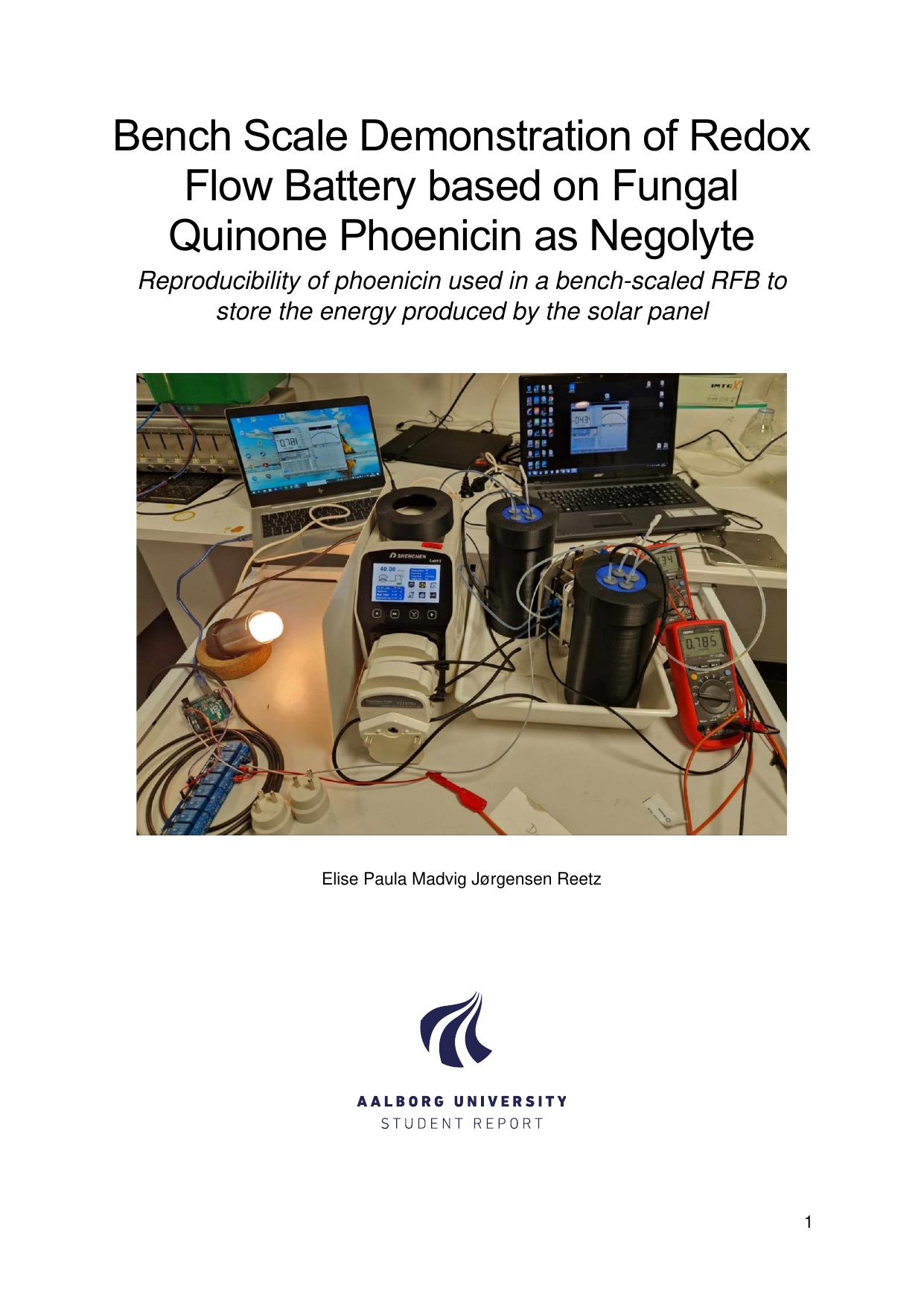
Bench Scale Demonstration of Redox Flow Battery based on Fungal Quinone Phoenicin as Negolyte: Reproducibility of phoenicin used in a bench-scaled RFB to store the energy produced by the solar panel
Term
4. term
Education
Publication year
2024
Submitted on
2024-06-02
Pages
128
Abstract
There is a growing need for renewable energy utilization, where the redox flow battery (RFB) is an alternative greener option in the sector of battery technologies used for energy storage. This thesis focuses on the bench scaling of the already-proven working redox flow battery containing the fungal-sourced compound. The bench scaling is led by the connection of a solar panel to the RFB to investigate if the battery can store the solar panel's produced energy. The battery properties being judged upon in this thesis are the capacity of the battery compared to the energy produced by the solar panel, the three efficiencies: coulombic (CE), voltage (VE), and energy (EE), and the capacity loss per cycle and hour. The results show that the principle of an RFB operating on phoenicin can store energy produced by the PV panel with some adjustments based on the previously conducted quality check RFBs in this project. It can be concluded that, based on the RFB, it is a viable option to store energy produced by a renewable energy source.
There is a growing need for renewable energy utilization, where the redox flow battery (RFB) is an alternative greener option in the sector of battery technologies used for energy storage. This thesis focuses on the bench scaling of the already-proven working redox flow battery containing the fungal-sourced compound. The bench scaling is led by the connection of a solar panel to the RFB to investigate if the battery can store the solar panel's produced energy. The battery properties being judged upon in this thesis are the capacity of the battery compared to the energy produced by the solar panel, the three efficiencies: coulombic (CE), voltage (VE), and energy (EE), and the capacity loss per cycle and hour. The results show that the principle of an RFB operating on phoenicin can store energy produced by the PV panel with some adjustments based on the previously conducted quality check RFBs in this project. It can be concluded that, based on the RFB, it is a viable option to store energy produced by a renewable energy source.
Keywords
Documents
